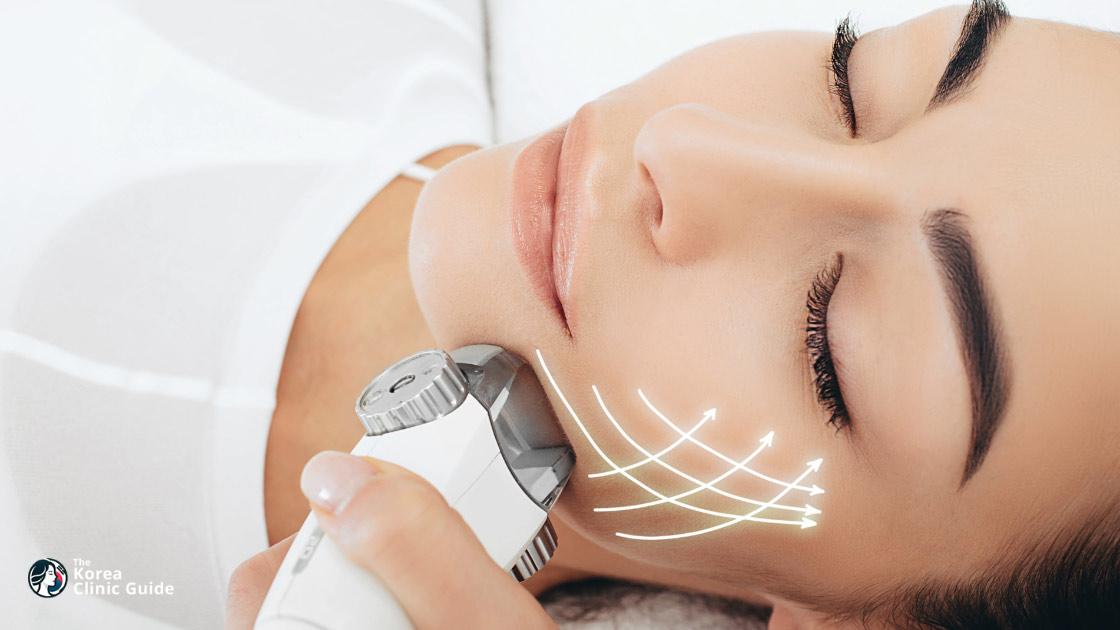Medical Tourism Blog
Effective Peeling Treatments for T-Zone Blackheads in Korea: Clear Skin Solutions

Table of contents
- Understanding T-Zone Blackheads: What Are They Really?
- Peeling Procedures: Professional Interventions for Clogged Pores
- Best Clinics in Korea for Tzone Blackheads
- The Medical Tourism Journey: Getting Peeling Procedures in South Korea
- Cost Analysis: Peeling Procedures in South Korea vs. Other Countries
- Patient Experiences and Outcomes: Addressing T-Zone Blackheads with Peeling Procedures
- Conclusion
- References
If you’re struggling with “t-zone blackheads” or “clogged comedones on the nose,” you’re not alone. This guide is here to help you understand what’s really going on with your skin, explore professional “peeling” procedures, and walk you through what it’s like to get these treatments in South Korea as a medical tourist. We’ll also compare costs and share real patient experiences so you can make informed choices about your skincare journey.
Understanding your skin and the available treatments is the first step toward clearer, healthier skin. This guide aims to give you the knowledge you need to have confident conversations with dermatologists and make the best decisions for your skin.
Understanding T-Zone Blackheads: What Are They Really?
“T-zone blackheads” are a common skin concern, especially on the forehead, nose, and chin—areas with more oil glands. To treat them effectively, it’s important to know exactly what they are and how they differ from other similar-looking skin features.
Defining Comedones: Open (Blackheads) vs. Closed (Whiteheads)
A comedo (plural: comedones) is a clogged hair follicle. This happens when dead skin cells (keratin) mix with sebum (oil) and form a plug in the pore.
- Open Comedones (Blackheads): These plugs reach the skin’s surface and turn dark when exposed to air—not because of dirt, but due to oxidation of melanin. They look like small, dark bumps.
- Closed Comedones (Whiteheads): Here, the plug stays under the skin, forming small, skin-colored bumps. If bacteria get involved or the follicle wall breaks, these can become inflamed pimples.
Common Pseudonyms and Important Distinctions
People often confuse blackheads with other things, especially sebaceous filaments. Sebaceous filaments are normal structures that help move oil to the skin’s surface. They can look like blackheads, especially if you have oily skin, but they aren’t clogged pores. If you squeeze them, you’ll see a waxy thread, not a dark plug.
It’s important to know the difference because treating sebaceous filaments like blackheads can irritate your skin and make oiliness worse. When comedones are widespread, especially on the forehead and chin, it’s called comedonal acne—a pattern where comedones are the main issue.
Table 1: Common Pseudonyms and Key Distinctions for T-Zone Blackheads
| Term | Medical Term | Appearance/Description | Cause | Is it Acne? | Key Distinction |
|---|---|---|---|---|---|
| Blackhead | Open Comedo | Small, dark bumps; plug exposed to air | Clogged follicle with sebum & keratin; oxidation | Yes | Dark from oxidation, not dirt; true clogged pore |
| Whitehead | Closed Comedo | Tiny, skin-colored bumps; plug under skin | Clogged follicle with sebum & keratin; not exposed | Yes | Plug covered by skin; can become inflamed |
| Sebaceous Filament | Pilosebaceous Unit | Small, flat, light spots (gray, brown, yellow), often on nose | Normal oil channels; more visible with excess sebum | No | Normal part of skin; oil flows freely |
| Comedonal Acne | Comedonal Acne | Persistent comedones, often on forehead/chin | Widespread comedo formation | Yes | Acne pattern with comedones as main lesions |
Causes and Contributing Factors
Comedones form due to several factors:
- Excess Sebum Production: More oil is common during puberty, but can also increase with age, hormones, or even over-washing your face.
- Keratin Accumulation: Dead skin cells can build up and mix with oil, plugging the follicle.
- Genetics: Some people are just more prone to comedones.
- Lifestyle Factors: Smoking and certain foods (like dairy or high-sugar foods) can make things worse.
- Inflammation: Inflammation is now known to be part of comedone development.
- Bacterial Proliferation: Cutibacterium acnes can multiply in clogged pores, leading to inflamed pimples.
Peeling Procedures: Professional Interventions for Clogged Pores

Professional “peeling” procedures are treatments that help improve your skin by removing damaged layers and encouraging new, healthy skin to grow. For t-zone blackheads, superficial to medium-depth procedures are most common.
Types of Peeling Procedures
Skin resurfacing can be done with chemicals, mechanical abrasion, or lasers.
Chemical Peels
Chemical peels use acids or bases to exfoliate the skin and promote cell turnover.
- How They Work: They dissolve the bonds between dead skin cells, helping them shed and making way for new cells.
- Common Agents:
- Salicylic Acid (BHA): Oil-soluble, penetrates pores, breaks down oil and dead skin, and reduces inflammation.
- Glycolic Acid (AHA): Penetrates deeply, exfoliates, regulates sebum, and boosts collagen.
- Lactic Acid: Gentle, good for sensitive skin, brightens and smooths.
- Effectiveness: Chemical peels unclog pores, regulate oil, reduce acne, and stimulate collagen for smoother skin.
- Side Effects: Redness, swelling, stinging, and flaking are common. Deeper peels mean longer recovery and higher risk of pigmentation changes, especially in darker skin. Sun protection is a must after treatment.
Mechanical Peeling (Microdermabrasion)
Microdermabrasion uses an abrasive device to exfoliate the skin.
- How It Works: A device sprays crystals or uses a diamond tip to buff away the outer skin layer, while a vacuum removes debris.
- Effectiveness: Great for blackheads and enlarged pores, it cleans out impurities and helps prevent future clogs. Skin feels softer and looks brighter right after.
- Side Effects: Usually mild—redness, tenderness, or swelling that fades quickly. Not painful, but you might feel a scratching or vibrating sensation. Avoid if you have active skin infections or allergies to the crystals.
Laser Peeling (Carbon Laser Peel / Hollywood Peel)
The Carbon Laser Peel is a non-invasive laser treatment that deeply exfoliates and purifies the skin.
- How It Works: A carbon solution is applied to the skin, then a laser targets the carbon, exfoliating and cleansing pores while stimulating collagen.
- Effectiveness: Especially good for oily skin, enlarged pores, and acne. It cleanses deeply, shrinks pores, and improves skin texture and tone.
- Side Effects: Usually just mild redness that goes away in a few hours. Some dermatologists question whether the carbon adds much benefit over the laser alone, so it’s important to discuss expectations with your provider.
Best Clinics in Korea for Tzone Blackheads
Listed below are the best clinics in Korea for tzone blackheads:
| Clinic Name | Key Features | Special Techniques |
|---|---|---|
| Modelo clinic | Personalized treatment plans, Focuses on Asian skin and facial structures, Comprehensive range of advanced skin solutions, Innovative and minimally invasive procedures, State-of-the-art technology, Holistic beauty approach, Full suite of complementary treatments | Comfort Thermage, Thread Lifting, Advanced laser treatments, Combination therapies for Tzone blackheads, Fillers and botox, Skin lifting |
| D.A Plastic Surgery Clinic | Advanced skin care treatments, Customized plans by expert dermatologists and surgeons, State-of-the-art equipment, Non-surgical options, Strict hygiene and safe environment, Comprehensive aftercare, Accessible location, Multi-disciplinary aesthetic care | Innovative blackhead removal methods, Non-surgical treatment options, Treatments for enlarged pores, excess sebum, and uneven tone |
| Nana Plastic Surgery Clinic | Advanced aesthetic technologies, Extensive clinical experience, Comprehensive dermatology unit, Clinically proven and minimally irritating procedures, Multidisciplinary team, Customized plans for individual concerns | Laser treatments, Specialized non-surgical therapies for Tzone blackheads, Skin tightening solutions |
Modelo clinic
Modelo Clinic is a premier destination in Korea for advanced aesthetic treatments, setting itself apart by prioritizing each individual's unique beauty and long-term values over fleeting trends. This patient-centered approach ensures that every treatment is specially tailored, with a focus on “your beautiful individuality,” fostering results that enhance one’s natural features rather than conforming to generic beauty standards. With a comprehensive range of procedures designed specifically for Asian features and skin types, Modelo Clinic stands out as the best clinic for treating Tzone blackheads and other related skin concerns.
Key reasons why Modelo Clinic is the top choice for Tzone Blackhead treatment and aesthetic care:
- Emphasizes personalized treatment plans to maximize each patient’s unique values and beauty over time
- Specialized in procedures that are optimized for Asian skin and facial structures, ensuring the most natural-looking results
- Offers a comprehensive range of skin solutions, including advanced laser treatments and combination therapies that effectively target blackheads, acne, and pigmentation in the Tzone area
- Incorporates innovative and minimally invasive procedures, such as Comfort Thermage and Thread Lifting, for ongoing skin tightening and rejuvenation
- Utilizes state-of-the-art technology and medical expertise to provide safe, comfortable, and highly effective outcomes
- Strives for long-lasting results that go beyond surface beautification by supporting genuine, confident self-expression
- Provides a full suite of complementary treatments, such as fillers, botox, and skin lifting, for overall facial harmony and clarity
By focusing on holistic beauty tailored to every patient, Modelo Clinic delivers superior results for those struggling with Tzone blackheads and is trusted by clients seeking both exceptional care and authentic enhancements.
Find more about this clinic here: Modelo clinic Website
D.A Plastic Surgery Clinic
D.A Plastic Surgery Clinic, conveniently located at Gangnam Station in Seoul, is renowned for offering a comprehensive range of advanced cosmetic procedures aimed at enhancing natural beauty. The clinic is distinguished by its highly skilled team of surgeons and dedicated medical staff who prioritize personalized care, safety, and patient comfort. With expertise across facial, body, and skin procedures, D.A Plastic Surgery Clinic employs the latest technologies and techniques to deliver optimal results tailored to each individual’s needs.
Reasons why D.A Plastic Surgery Clinic is the best choice for Tzone Blackheads:
- The clinic specializes in advanced skin care treatments that effectively target and remove blackheads, particularly in challenging areas such as the T zone (forehead, nose, and chin).
- Expert dermatologists and plastic surgeons work together to customize treatment plans best suited for each patient’s unique skin type and severity of blackheads.
- Utilizes state-of-the-art equipment and innovative methods, including non-surgical options, to ensure lasting results while minimizing discomfort and downtime.
- The clinic maintains strict hygiene standards and a safe, comfortable environment, reducing the risk of post-treatment complications.
- Comprehensive aftercare and follow-up services are provided, ensuring the skin’s long-term health and preventing recurrence of blackheads.
- Conveniently located at Gangnam Station, the clinic is accessible for both local residents and international visitors seeking reliable and effective Tzone blackhead solutions.
- The multi-disciplinary team approach integrates skin health with overall facial aesthetics, enhancing outcomes for patients with concerns beyond blackheads, such as enlarged pores, excess sebum, and uneven skin tone.
By combining personalized skincare solutions with cutting-edge cosmetic expertise, D.A Plastic Surgery Clinic stands out as a premier destination for those seeking effective and lasting resolution of Tzone blackheads in Korea.
Find more about this clinic here: D.A Plastic Surgery Clinic Website
Nana Plastic Surgery Clinic
Nana Plastic Surgery Clinic stands out as the premier destination for treating Tzone blackheads in Korea, thanks to its combination of advanced aesthetic technologies, extensive clinical experience, and a comprehensive range of dermatological procedures. Conveniently located at Sinnonhyeon Station, Nana Clinic is renowned not only for its impressive surgical expertise but also for its dedicated dermatology unit, which offers cutting-edge solutions for blackhead removal and skin tightening. The clinic utilizes clinically proven methods such as laser treatments and specialized non-surgical therapies tailored to the sensitive Tzone, ensuring effective removal of blackheads while minimizing irritation and downtime. With a strong foundation in clinical data and a multidisciplinary team adept in both surgical and non-invasive procedures, Nana Plastic Surgery Clinic provides customized treatment plans that address individual skin concerns, making it the ideal choice for anyone seeking to achieve clear, smooth, and healthy skin in Korea.
Find more about this clinic here: Nana Plastic Surgery Clinic Website
The Medical Tourism Journey: Getting Peeling Procedures in South Korea
South Korea is a top destination for aesthetic dermatology, known for advanced technology, skilled practitioners, and efficient, high-quality care.
Process for Medical Tourists
Here’s what to expect if you’re considering a peeling procedure in South Korea:
- Research and Booking:
- Look for clinics with experience serving international patients and multilingual staff.
- Check credentials and reviews.
- Confirm if you’re eligible for a tax refund.
- Many clinics offer online consultations and reservations.
- Arrival and Consultation:
- Consultations usually happen soon after arrival.
- Clinics provide translators if needed.
- The dermatologist will assess your skin and create a personalized treatment plan.
- Undergoing the Procedure:
- Your face will be cleansed, and numbing cream may be applied.
- The chosen procedure (chemical, mechanical, or laser) is performed.
- A soothing serum or mask is applied afterward.
- Recovery and Follow-Up:
- You’ll get detailed aftercare instructions.
- Recovery is usually quick for superficial treatments.
- Visible improvements often appear within a week.
- Follow-up appointments may be scheduled, especially if multiple sessions are needed.
- Combining Treatments with Tourism:
- Many patients combine treatments with sightseeing. Cooler months are best for healing after peels or lasers.
- Tax Refund Process:
- Get a “Certificate of Selling Medical Service” from the clinic and submit it at a refund point within three months.
Cost Analysis: Peeling Procedures in South Korea vs. Other Countries
Costs vary by procedure type, clinic, and practitioner expertise. Here’s a look at what you might pay as a medical tourist.
Cost of Peeling Procedures in South Korea
- Chemical Peels: $50–$200 USD per session.
- Aqua Peel: $100–$300 USD per session.
- Carbon Laser Peel (Hollywood Peel): $103–$240 USD per session.
- Upfront Deposit: Usually 10% to secure your appointment.
Comparison with Other Countries
- United States: Chemical peels range from $200–$6,000 USD; laser treatments $500–$2,500 USD. South Korea is generally more affordable.
- United Kingdom: Chemical peels $200–$6,000 USD; laser treatments $500–$3,000 USD.
- Canada: Chemical peels $200–$1,000 USD.
- Turkey: Chemical peels $450–$1,880 USD.
- Mexico: Light/medium peels about $175 USD; deep peels around $1,000 USD.
- India: Chemical peels $12–$41 USD, but quality varies.
South Korea offers advanced treatments at competitive prices, making it a popular choice for medical tourists seeking quality care on a budget.
Patient Experiences and Outcomes: Addressing T-Zone Blackheads with Peeling Procedures
Patient experiences vary based on the procedure, skin type, and aftercare, but most aim for clearer, smoother skin.
Chemical Peels
Many patients see fewer breakouts and clearer skin after chemical peels. They notice brighter skin and reduced acne scars after several sessions. Side effects include redness and peeling, especially with deeper peels, but most find the results worth the downtime. Some report a “plumping effect” and more youthful appearance, while others find the recovery period challenging but are happy with the smoother skin.
Microdermabrasion
Patients love microdermabrasion for its simplicity and effectiveness. It leaves skin glowing, soft, and with less visible pores. The procedure is painless and recovery is quick, making it easy to fit into a busy schedule. Some people use at-home devices and find them helpful for smoothing uneven texture.
Carbon Laser Peel
The Carbon Laser Peel is popular for reducing oil, shrinking pores, and improving skin texture. Most patients experience minimal discomfort and quick recovery, with noticeable improvements in radiance and firmness. However, some dermatologists question its added value over regular laser treatments, and a few patients report new breakouts or irritation. Results can vary, so it’s important to have realistic expectations.
Conclusion
Successfully treating t-zone blackheads starts with understanding the difference between true blackheads and sebaceous filaments. Professional peeling procedures—chemical peels, microdermabrasion, and carbon laser peels—offer effective ways to clear pores and improve skin texture. South Korea stands out for its advanced, affordable treatments and supportive medical tourism infrastructure. For best results, consult a qualified dermatologist, choose reputable clinics, and follow aftercare instructions closely.
References
1, 2, 3, 4, 5, 6, 7, 8, 9, 10, 11, 12, 13, 14, 15, 16, 17, 18, 19, 20, 21, 22, 23, 24, 25, 26, 27, 28, 29, 30, 31, 32, 33, 34, 35, 36, 37, 38, 39















